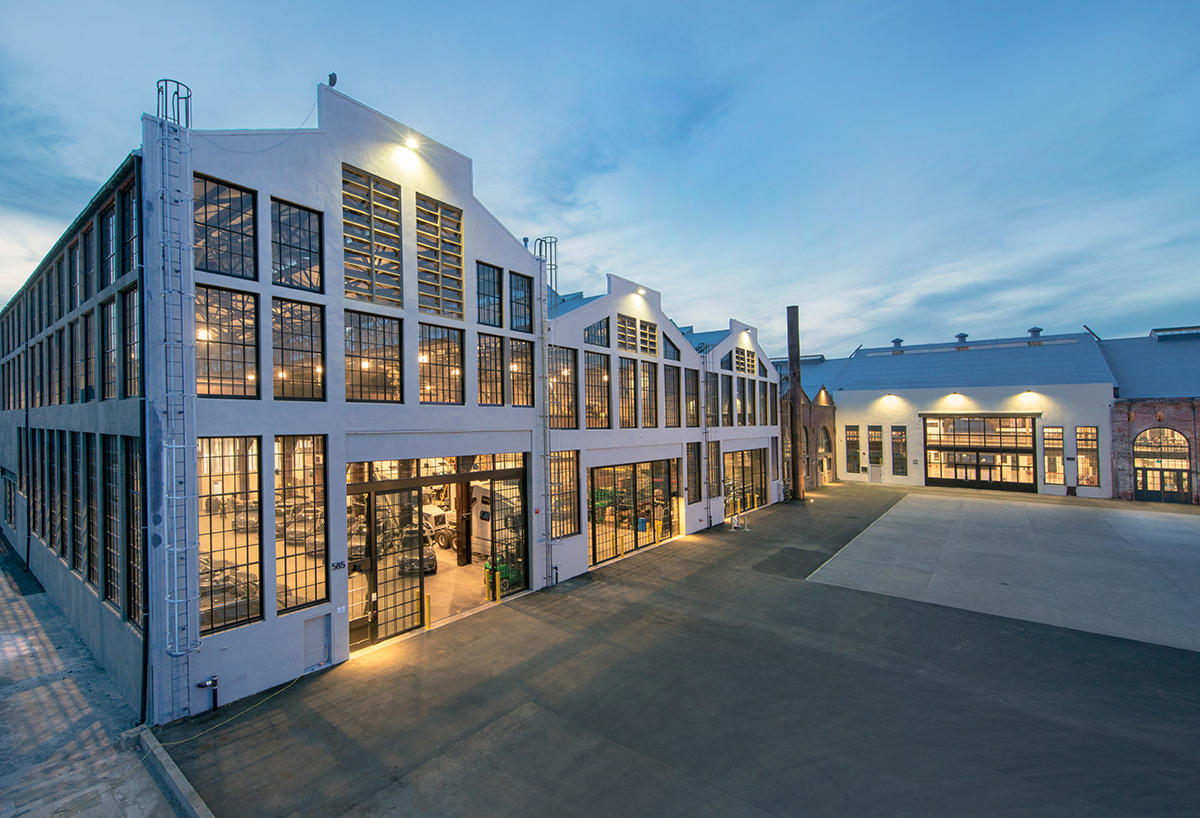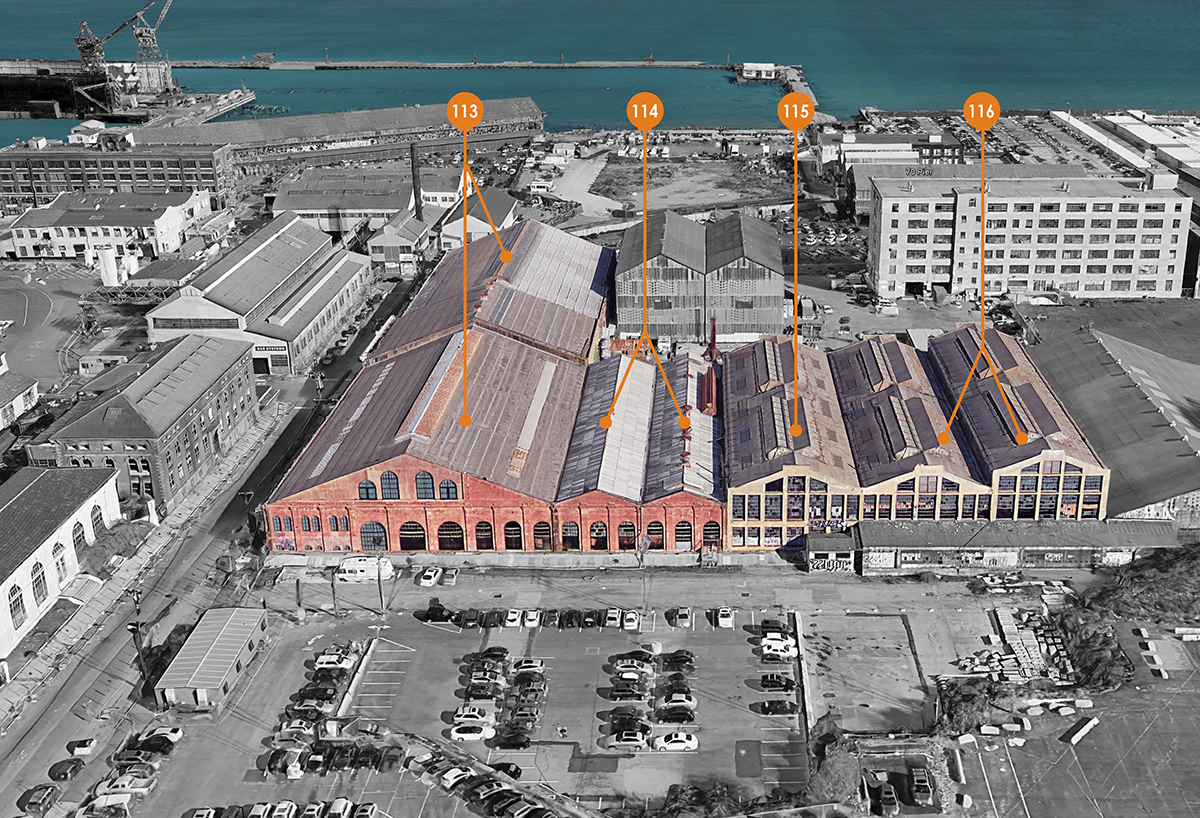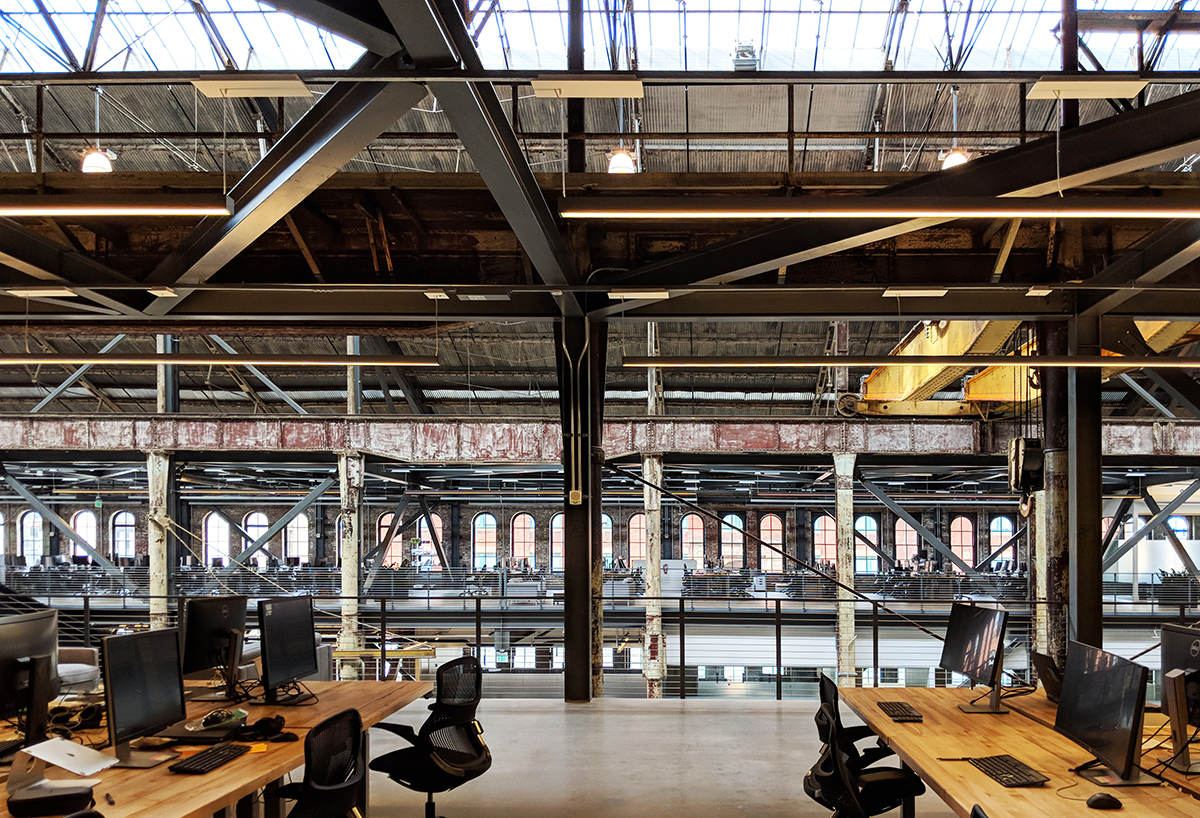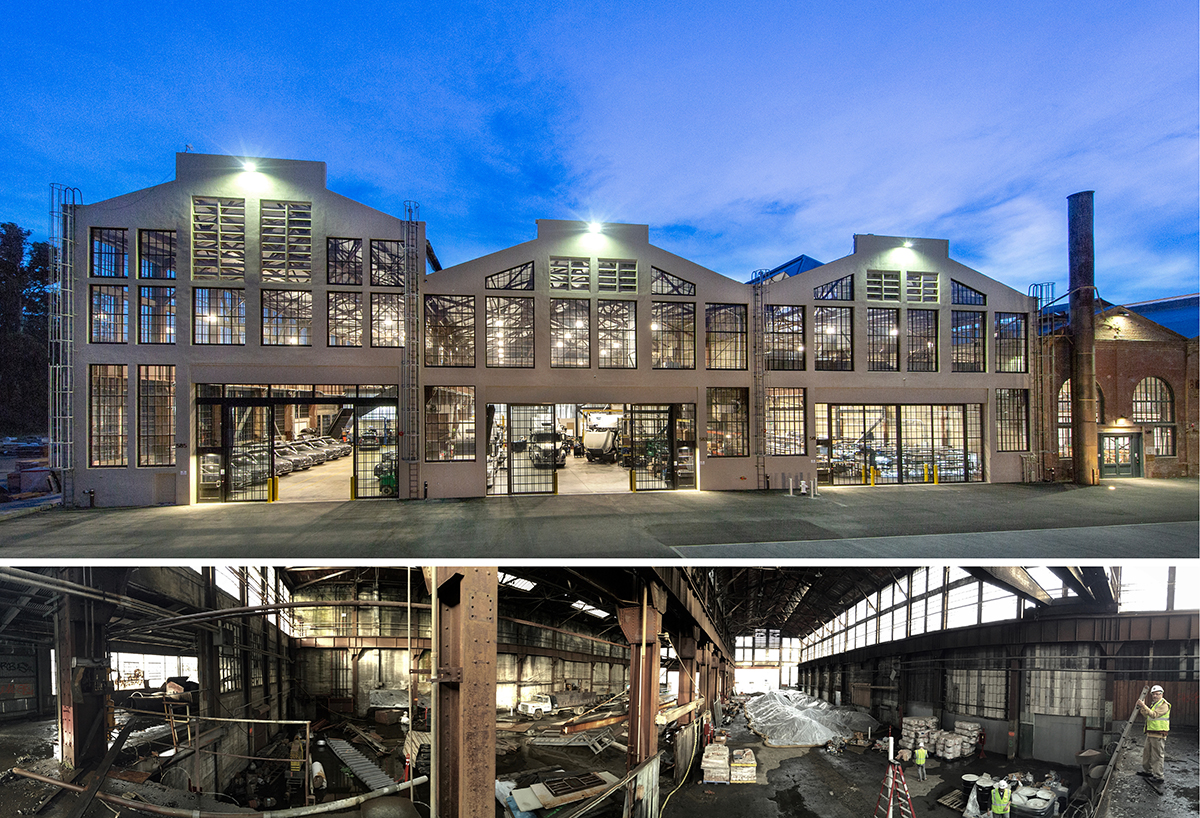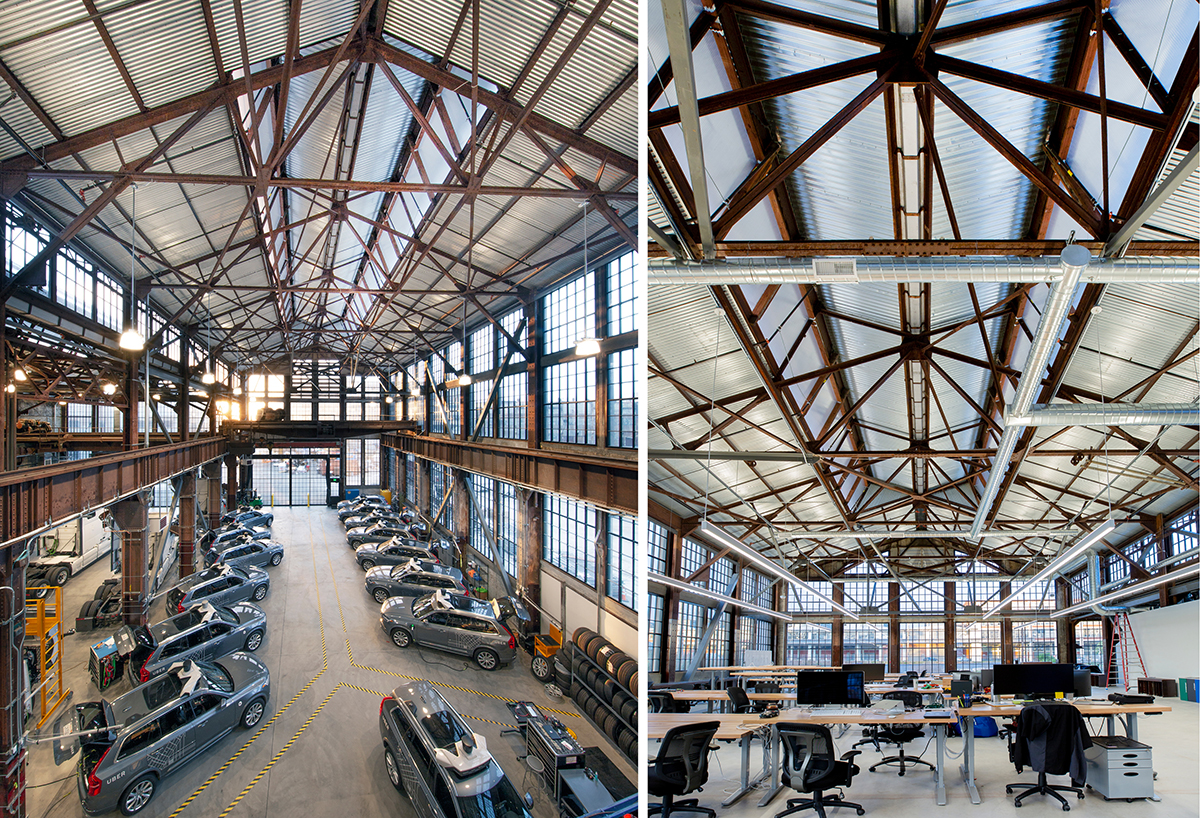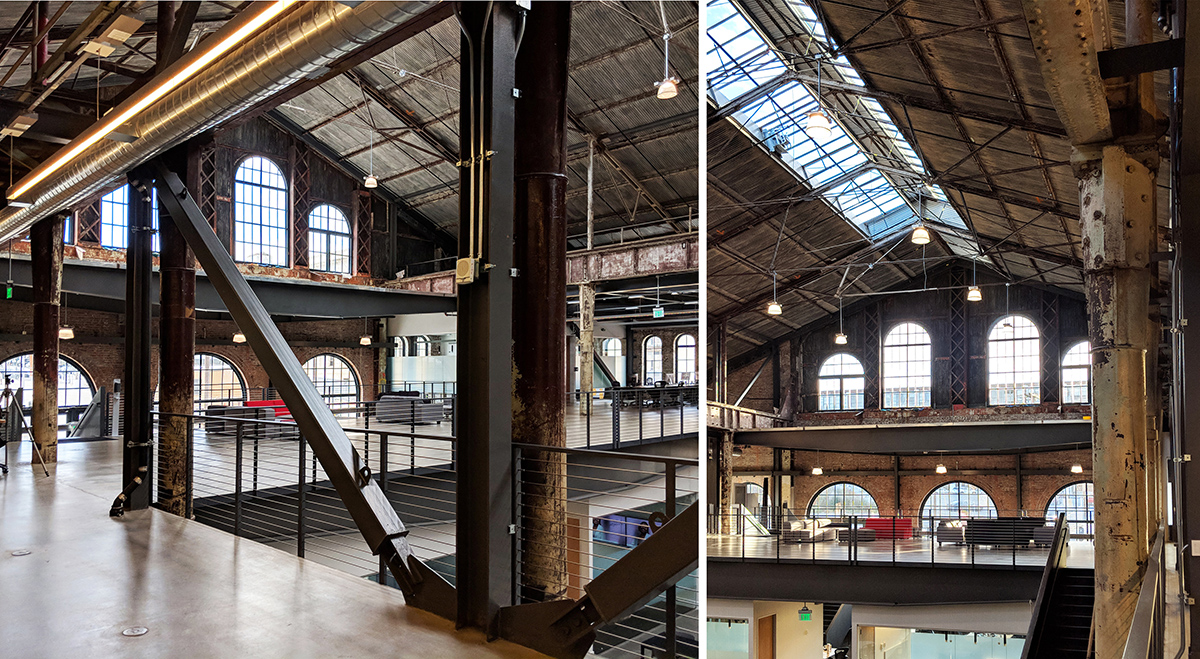AISC
Uber Advanced Technologies Group R&D Center
Presidential Award for Excellence in Adaptive Reuse
The scope of this historic rehabilitation and adaptive reuse required notable courage, vision, and collaboration, not to mention expertise in structural and seismic engineering among other trades, to realize the project’s potential. —2021 IDEAS² Judge Wanda Lau, Editor, Technology and Practice, ARCHITECT magazine
It is hard to imagine that these beautiful buildings and pieces of history could have been lost if not for the thoughtful re-imagination by the design team. The exposed 1800s steel structure alongside the new modern structure creates an interesting and visually striking appearance on the interior of the buildings. —2021 IDEAS² Judge Stephanie J. Hautzinger, SE, AIA, Associate Vice President, CannonDesign, Chicago
Uber Advanced Technologies Group is a self-driving technology engineering team whose Research and Development Center is housed within Pier 70 in San Francisco. The center’s four massive buildings, derelict and inaccessible for decades, now extend the site’s legacy of transportation endeavors into the 21st century.
The approach was to retain and repair salvageable elements. If unsalvageable, the replacement element or material was specified to be historically compatible and environmentally benign. In addition, the project’s conservation and environmental strategies included maximizing daylighting through skylights and windows, enhancing natural ventilation, providing radiant heating, and specifying permeable concrete at exterior paving. Elements like skylights, curtain walls, steel stairs, and others involved close design involvement between architect and developer, with shop drawings being regularly reviewed by the design team.
Thanks to their industrial beginnings, steel was already part of the language of these historic edifices. Original steel components were left natural or treated with transparent coatings, while new steel structural reinforcements are painted to draw a clear visual distinction between new and old. Steel and concrete mezzanines act as structural diaphragms to reinforce the buildings, which is especially crucial in the unreinforced masonry structures. Demising steel and glass walls echo the original steel windows and skylights and allow access between tenant spaces while preserving the large interior volumes.
It is to be expected that a 19th-century building in San Francisco was not designed for earthquakes. However, the Pier 70 buildings’ vulnerability was exacerbated by many years of vacancy, during which vandalism, the stripping of materials and artifacts, and weather intrusion occurred. An egregious example: The exposed masonry at Building 113 had deteriorated to the point of crumbling to powder. During construction, the safety of the workers tasked with transforming the buildings was paramount. Before the new structural system was complete, protected zones were built within the complex so that construction crews could retreat to safety at the first hint of an earthquake tremor.
The design team developed a building-within-a-building concept that preserves the historic perimeter brick walls, reduces the cost of temporary shoring, and retains the open volume in the 62-ft-tall space. The updated complex is designed to resist a 500-year-recurrence seismic event while also optimizing space. Steel columns and braces are strategically located along the existing building structure to minimize visual impact. New concrete mezzanines not only add leasable area but also brace the historic brick walls at mid-height. Full-height walls have upper portions sheathed in clear, multi-wall poly-carbonate to maintain the building’s original site lines. Steel and glass walls preserve the spatial character of the industrial buildings for the client and its neighbors. Conference rooms and other program functions are free-standing elements within the large volumes. Lab, shop, and kitchen spaces are located under mezzanines, allowing for sound isolation, temperature control, and dust containment. In addition, natural ventilation teams up with ceiling fans and radiant heat systems to condition the cavernous spaces.
This project was featured in the article “What’s Cool in Steel” in the December 2020 issue of Modern Steel Construction.
Steel fabricator, erector, and detailer: Kwan Wo Ironworks, Inc., San Francisco *AISC Member* *AISC Certified Fabricator* *AISC Certified Erector*
Structural engineer: Nabih Youssef Associates, San Francisco
Architect: Marcy Wong Donn Logan Architects, Berkeley, Calif.
General contractors:
Novo Construction, San Francisco
Nibbi Brothers, San Francisco
Owners:
Orton Development, Inc., Emeryville, Calif.
Port of San Francisco
- Project Category: Year 2021
- Location: San Francisco, CA
- Award Category: Presidential Award of Excellence in Engineering
- Year Completed: 2018
- Submitting Firm: Marcy Wong Donn Logan Architects
- Photo Credit: 1, 3, 5, 6 - Billy Hustace; 2 - MWDL; 4 - Billy Hustance and MWDL

